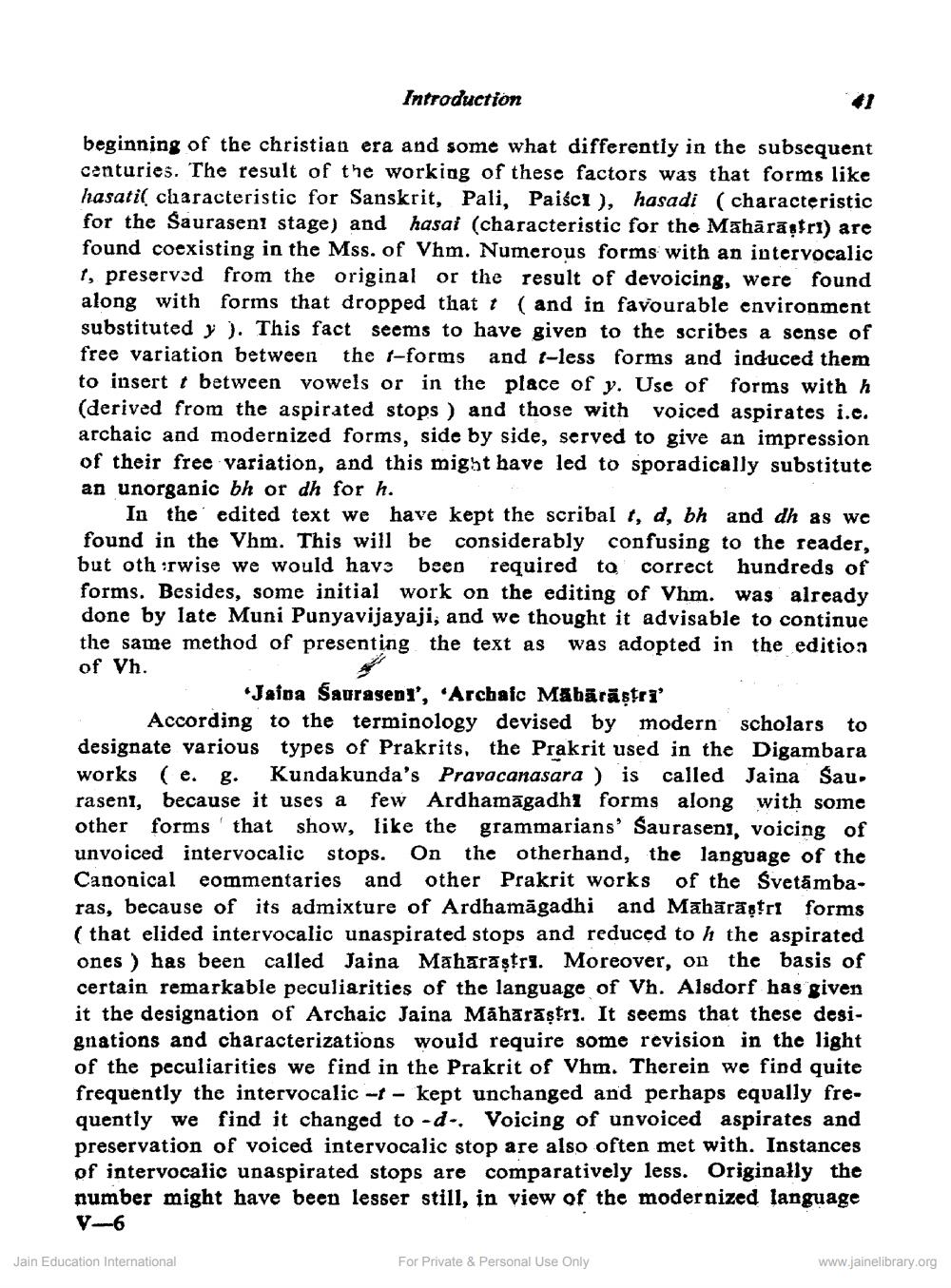________________
Introduction
beginning of the christian era and some what differently in the subsequent centuries. The result of the working of these factors was that forms like hasatil characteristic for Sanskrit, Pali, Paiści ), hasadi (characteristic for the Sauraseni stage) and hasai (characteristic for the Mahārāştrı) are found coexisting in the Mss. of Vhm. Numerous forms with an intervocalic 1, preserved from the original or the result of devoicing, were found along with forms that dropped that t ( and in favourable environment substituted y ). This fact seems to have given to the scribes a sense of free variation between the f-forms and t-less forms and induced them to insert + between vowels or in the place of y. Use of forms with h (derived from the aspirated stops ) and those with voiced aspirates i.c. archaic and modernized forms, side by side, served to give an impression of their free variation, and this might have led to sporadically substitute an unorganic bh or dh for h.
In the edited text we have kept the scribal t, d, bh and dh as we found in the Vhm. This will be considerably confusing to the reader, but oth :rwise we would have been required to correct hundreds of forms. Besides, some initial work on the editing of Vhm. was already done by late Muni Punyavijayaji, and we thought it advisable to continue the same method of presenting the text as was adopted in the edition of Vh.
Jaipa Saurasept', 'Archaic Màbārāştri' According to the terminology devised by modern scholars to designate various types of Prakrits, the Prakrit used in the Digambara works (e. g. Kundakunda's Pravacanasara ) is called Jaina Sau. raseni, because it uses a few Ardhamāgadhi forms along with some other forms that show, like the grammarians' Sauraseni, voicing of unvoiced intervocalic stops. On the otherhand, the language of the Canonical commentaries and other Prakrit works of the Svetambaras, because of its admixture of Ardhamāgadhi and Mahārāştri forms (that elided intervocalic unaspirated stops and reduced to h the aspirated ones) has been called Jaina Maharaştri. Moreover, on the basis of certain remarkable peculiarities of the language of Vh. Alsdorf has given it the designation of Archaic Jaina Mäharăștri. It seems that these designations and characterizations would require some revision in the light of the peculiarities we find in the Prakrit of Vhm. Therein we find quite frequently the intervocalic -- kept unchanged and perhaps equally frequently we find it changed to-d.. Voicing of unvoiced aspirates and preservation of voiced intervocalic stop are also often met with. Instances of intervocalic unaspirated stops are comparatively less. Originally the number might have been lesser still, in view of the modernized language V-6
Jain Education International
For Private & Personal Use Only
www.jainelibrary.org




